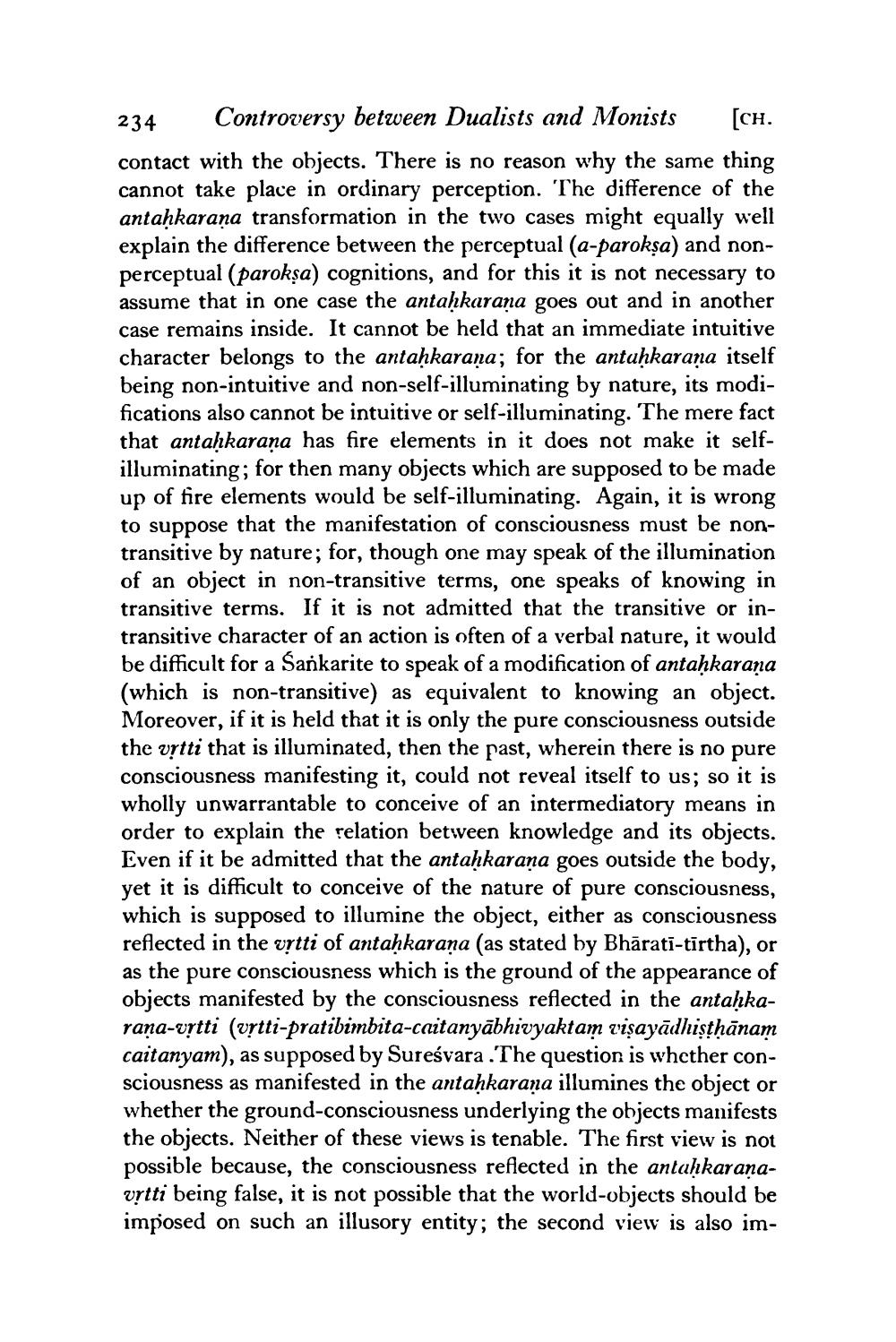________________
234 Controversy between Dualists and Monists [ch. contact with the objects. There is no reason why the same thing cannot take place in ordinary perception. The difference of the antahkarana transformation in the two cases might equally well explain the difference between the perceptual (a-parokşa) and nonperceptual (parokşa) cognitions, and for this it is not necessary to assume that in one case the antaḥkarana goes out and in another case remains inside. It cannot be held that an immediate intuitive character belongs to the antahkarana; for the antaḥkaraṇa itself being non-intuitive and non-self-illuminating by nature, its modifications also cannot be intuitive or self-illuminating. The mere fact that antahkarana has fire elements in it does not make it selfilluminating; for then many objects which are supposed to be made up of fire elements would be self-illuminating. Again, it is wrong to suppose that the manifestation of consciousness must be nontransitive by nature; for, though one may speak of the illumination of an object in non-transitive terms, one speaks of knowing in transitive terms. If it is not admitted that the transitive or intransitive character of an action is often of a verbal nature, it would be difficult for a Sankarite to speak of a modification of antaḥkaraņa (which is non-transitive) as equivalent to knowing an object. Moreover, if it is held that it is only the pure consciousness outside the vrtti that is illuminated, then the past, wherein there is no pure consciousness manifesting it, could not reveal itself to us; so it is wholly unwarrantable to conceive of an intermediatory means in order to explain the relation between knowledge and its objects. Even if it be admitted that the antahkarana goes outside the body, yet it is difficult to conceive of the nature of pure consciousness, which is supposed to illumine the object, either as consciousness reflected in the vrtti of antahkarana (as stated by Bhārati-tīrtha), or as the pure consciousness which is the ground of the appearance of objects manifested by the consciousness reflected in the antaḥkarana-vrtti (vrtti-pratibimbita-caitanyābhivyaktam visayādhisthānam caitanyam), as supposed by Sureśvara . The question is whether consciousness as manifested in the antaḥkarana illumines the object or whether the ground-consciousness underlying the objects manifests the objects. Neither of these views is tenable. The first view is not possible because, the consciousness reflected in the antahkaranavrtti being false, it is not possible that the world-objects should be imposed on such an illusory entity; the second view is also im




